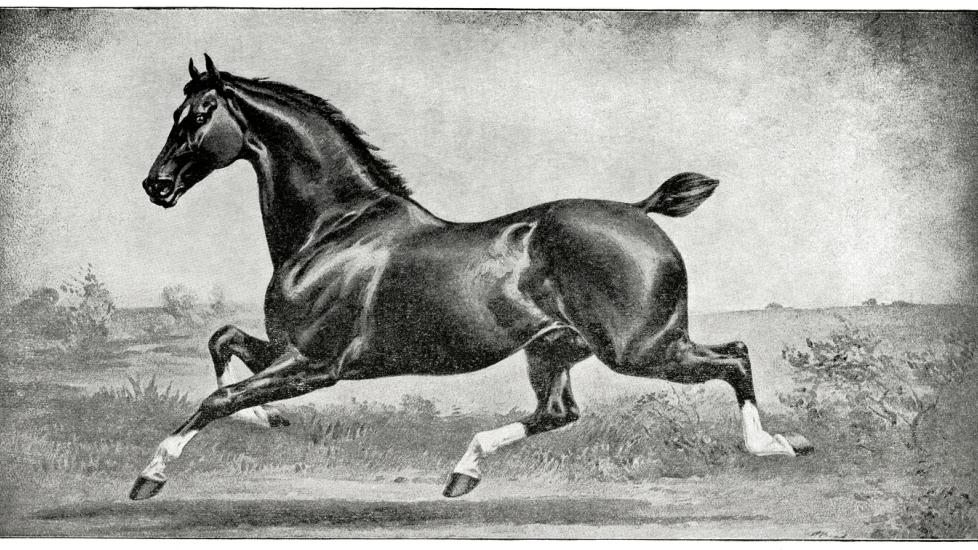Hackney
Reviewed for accuracy October 5, 2022.
The Hackney is a unique English breed that is famous for its beautiful stature and gentleness. Sometimes referred to as the "stepper" because of its high-stepping gait beloved as a carriage driver, it is used today as a circus or show entertainer, gracing audiences in England and other parts of the world.
Physical Characteristics
The Hackney is a stylish horse with a medium-sized head, a small nose, and active ears. It has a solid body type with a slender neck, wide chest, smooth back, and well-formed ribs. Meanwhile, its croup (or loin) is even and its tail is set high. The Hackney also has fairly long legs, muscular hinds and tough hooves; but as tough as they are, its walk is quite silent.
The Hackney may be found in any solid color, including bay, brown, black, and chestnut, although some Hackneys have white markings on their coat. Its height ranges from 14.2 to 16.2 hands tall (or 56.2 to 64.8 inches high).
Personality and Temperament
The Hackney is one of the most graceful horses in the world. It embodies brilliance, elegance, and intelligence. Its graceful movement lends to its gentleness, but the Hackney can also be quite active. It is as if the horse's body is like a well-oiled machine with an endless number of flexible joints.
Care and Health
Because Hackneys are not as highly coveted since the evolution of transportation, their numbers have plummeted in recent decades, now estimated to be less than 3,000 worldwide. Work is being done to breed responsibly to try to boost the population, but they are on the Rare Breeds List.
History and Background
Believed to have originated from the bloodline of the Norfolk Trotter and ancestors of the Thoroughbred, the Hackney as we know it today began as a breed in 1760. Its strong body gave the Hackney the ability to pull carriages for long distances and thus raised the value of the breed in horse markets.
For a time, nothing seemed to match up against the Hackney, although the rise of motorbikes and automobiles in the early 20th century decreased the demand of the breed, almost to the point of extinction. Breeders began a concerted effort to preserve the Hackney bloodline and by the 1940s, the number of Hackneys bred increased somewhat. Today, the Hackney is mainly used as a show attraction, especially in children’s events.
Featured Image: Halftone of Matchless of Londesboro Hackney horse
iStock.com/NNehring
Help us make PetMD better
Was this article helpful?
